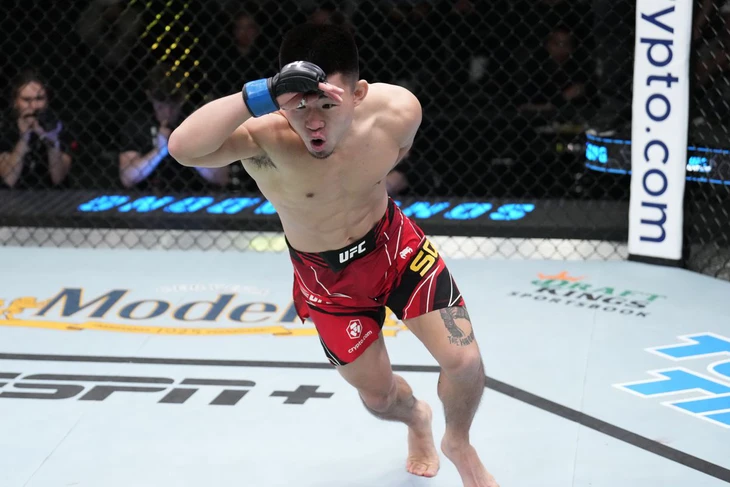
Song Yadong is a rare fighter who has been successful with sanda in the MMA ring - Photo: UFC
Very few people practice kung fu in MMA
In the modern world of martial arts, especially in the MMA arena, not all martial arts have the practical value that is rumored. The Chinese used to have high expectations for traditional kung fu, but they have increasingly had to accept the truth.
Some kung fu styles that are famous for their image or traditional culture are weak when put into actual combat. In this case, it is the sanda (sandal) of wushu - the martial art that represents modern Chinese kung fu.
In contrast, martial arts with a grappling foundation such as Brazilian Jiu-Jitsu (BJJ), wrestling and Muay Thai have dominated the ring for decades.
MMA fighting today is not like in the past - or in martial arts novels, where each fight takes place between disciples representing different schools. Instead, professional MMA fighters often study many different martial arts (usually 3-5) to have diverse fighting skills.
It’s hard to say which martial art is stronger than the other. But by examining the popularity of martial arts in the MMA world, martial arts fans can get some idea of which fighting style is the strongest.
Statistics from the Sherdog and Tapology database show that nearly 70% of UFC champions in the past 10 years have a background in BJJ or wrestling (wrestling in general).
Another statistic shows that more than 35% of UFC fighters have a wrestling background - a popular sport in the US, Russia and Iran.
The remaining 30-35% come from BJJ backgrounds, especially Brazilian and American fighters. Meanwhile, fighters with roots in Chinese kung fu or other traditional Asian martial arts account for less than 1%.
Kung fu has no place
This difference is not only a matter of quantity, but also reflects quality.
According to martial arts expert John Danaher - legendary coach of Georges St-Pierre and Gordon Ryan, modern MMA is a game of those who control distance and position, which is what wrestling and BJJ do best.
"When you control the ring, you control the outcome of the fight. MMA and wrestling are the sports that create the most control," Danaher said.
BJJ stands out for its ability to finish off opponents with chokes, joint breaks, and taking advantage of moments of distraction to end the match.
Wrestling excels at imposing playstyle. Fighters with wrestling backgrounds often decide whether the match will take place standing or on the mat.
Muay Thai - Thailand's specialty - lacks the control of grappling, but is the most effective stand-up style.
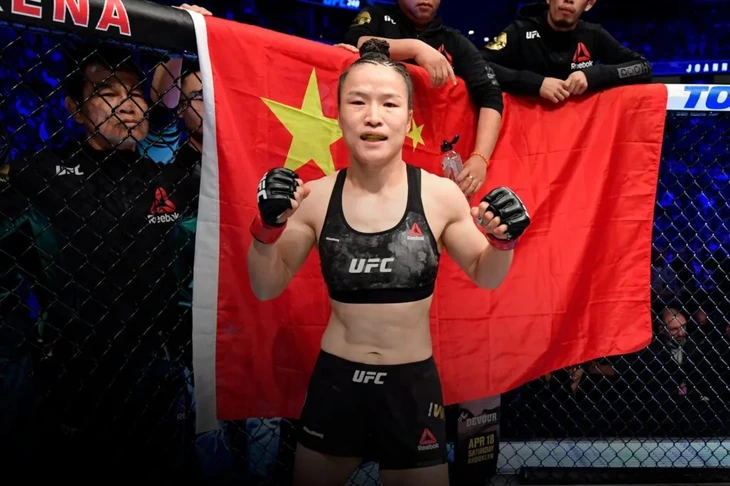
Zhang Weili is a rare fighter who uses sanda to "make a name" in the UFC ring - Photo: UFC
Muay Thai's elbows, knees, low kicks and clinches help fighters maintain offensive pressure throughout the fight. Israel Adesanya, Joanna Jędrzejczyk and Rodtang are prime examples of Muay Thai's power in MMA and kickboxing.
Meanwhile, Chinese kung fu - including wushu, Wing Chun, Shaolin - has almost no successful representatives in top MMA arenas such as UFC, ONE Championship, or Bellator.
Cung Le and Zhang Weili are two rare cases with sanda/wushu roots, but both of them succeeded by studying BJJ, boxing and wrestling abroad.
Similarly, Song Yadong, considered the strongest Chinese fighter in MMA today, also started training in BJJ and Muay Thai at the age of 20.
Kung fu fails due to the nature of training
The reason kung fu fails in the MMA ring stems from the nature of training. Modern Chinese martial arts are more about technical demonstration, patterned movements, and controlled sparring.
In an open environment like MMA, those techniques are no longer relevant. Fighters need realistic sparring, high pressure reflexes and the ability to adapt to any situation.
Joe Rogan - a veteran UFC commentator, BJJ and taekwondo black belt - once commented that traditional martial arts such as aikido, Wing Chun, kung fu "have no place when the opponent really fights back".
“They look good in movies, but they don't last in a real fight where no one will stand still for you to hit them,” he said.
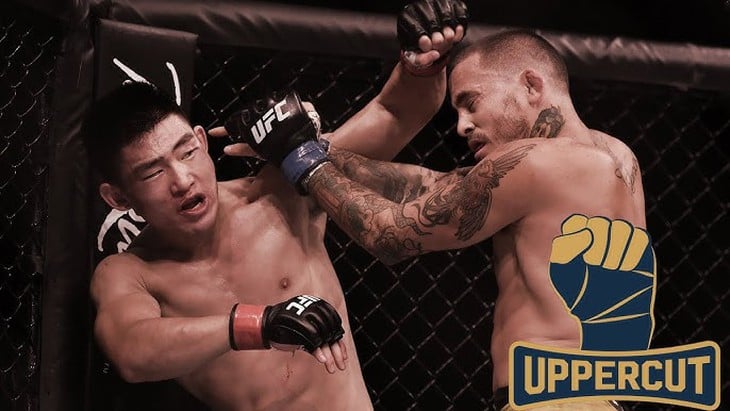
Song Yangdong (left) lost miserably when facing opponents using wrestling and BJJ - Photo: UPPER
In fact, at major MMA training centers like American Top Team, AKA, or Jackson-Wink, training programs revolve around the trio: wrestling, choking, and striking.
There are no Wing Chun or Tai Chi classes for professional fighters. All skills are tested through simulations and real fights.
Even ONE Championship, which has tried to promote traditional martial arts, has only found success in organizing exhibition matches. In the official MMA competition system, fighters still need to have a BJJ or wrestling background if they want to compete.
While Chinese kung fu is an important part of our cultural heritage, it is not competitive enough in the real world. In the world of MMA, value comes not from hype or tradition, but from performance in the ring. And for now, Chinese kung fu remains on the sidelines.
When looking at the number of active fighters, statistics from Tapology (2024) show that out of the more than 6,000 professional MMA fighters currently competing in major organizations:
- 2,100 fighters with wrestling backgrounds
- 1,950 fighters with BJJ background
- 1,200 fighters with boxing or Muay Thai background
- Only about 50-60 martial artists are related to the traditional martial arts of Chinese kung fu.
Source: https://tuoitre.vn/xep-hang-cac-mon-vo-o-mma-kung-fu-chot-bang-20250702213353313.htm



![[Photo] Cat Ba - Green island paradise](/_next/image?url=https%3A%2F%2Fvphoto.vietnam.vn%2Fthumb%2F1200x675%2Fvietnam%2Fresource%2FIMAGE%2F2025%2F12%2F04%2F1764821844074_ndo_br_1-dcbthienduongxanh638-jpg.webp&w=3840&q=75)











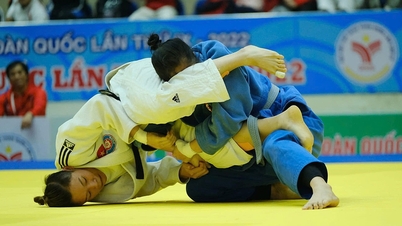







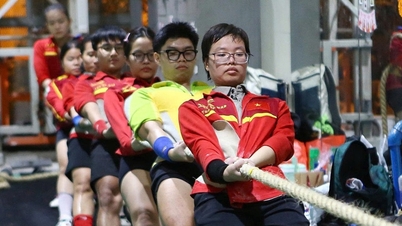




























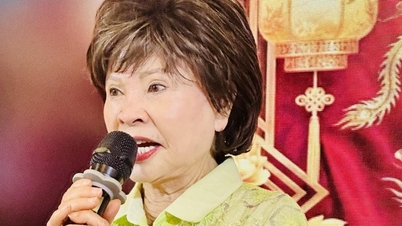








![[VIMC 40 days of lightning speed] Hai Phong Port determined to break through, reaching the target of 2 million TEUs by 2025](https://vphoto.vietnam.vn/thumb/402x226/vietnam/resource/IMAGE/2025/12/04/1764816441820_chp_4-12-25.jpeg)






















































Comment (0)